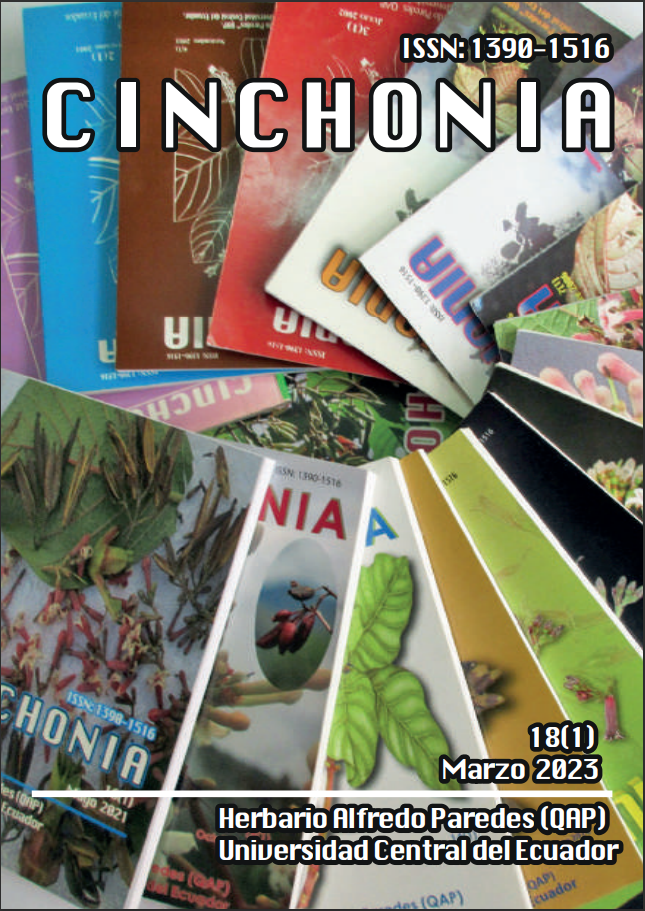Iconografía asociada a los magueyes (Agave L., Agavaceae)
Contenido principal del artículo
Resumen
La iconografía ha involucrado el estudio, la descripción, la clasificación y la interpretación de un ícono, así como la correlación de fuentes textuales con la evidencia del ícono. Los estudios sobre la iconografía vegetal de la América tropical se han enfocado, principalmente, en la identificación de láminas antiguas de variadas exploraciones naturalistas. Sin embargo, los estudios sobre la iconografía del género Agave apenas empieza a desarrollarse. Este estudio se enmarcó en el principio de los análisis iconográficos. Se reconocieron 18 especies y cuatro estilos morfológicos. Las especies más recurrentes en las iconografías analizadas fueron A. americana L. y A. salmiana Otto ex Salm-Dyck. Se espera que este artículo abra nuevas posibilidades de investigación, disfrute y entendimiento de las amplias fuentes de la iconografía vegetal, tanto antigua como reciente.
Detalles del artículo

Esta obra está bajo una licencia internacional Creative Commons Atribución-NoComercial-SinDerivadas 4.0.
Citas
Afanador Llach, M. J. 2011. Nombrar y
representar: Escritura y naturaleza
en el Códice de la Cruz-Badiano,
Fronteras de la Historia 16:
−41.
Alcina Franch, J. 1982. Arte y
antropología. Alianza Editorial,
S. A., Madrid.
Antei, G. 1997. Flora Columbiae.
Karsten. Tomos I y II. Seguros
Bolívar-OP Gráficas Ltda.,
Bogotá D. C.
Arboleda de Vega, S. & N. Galat de
León. 1993. Especias. Historia,
usos, cultivos y sus mejores
recetas. Editorial Voluntad S. A.,
Bogotá D. C.
Argüello García, P. M. & A. Botiva
Contreras. 2003. El arte rupestre
en Colombia. Revista La Tadeo
: 79–87.
Benítez, F. 2000. El señor maguey. Artes
de México 51: 8–16.
Bonfil Batalla, G. 2019. Cultivos
mesoamericanos. Arqueología
Mexicana 84 (edición especial):
–89.
Bye, R. & E. Linares. 1999. Plantas
medicinales del México
prehispánico. Arqueología
Mexicana 7: 4–13.
Campana Delgado, C. 2015. Iconografía
del pensamiento andino. Fondo
Editorial de la Universidad
Privada Antenor Orrego, Trujillo,
Perú.
Campana Delgado, C. 2019. El mar
y las aguas en la iconografía
andina. Fondo Editorial de la
Universidad Privada Antenor
Orrego, Trujillo, Perú.
Cecchini, T. 2008. Las plantas
medicinales. Editorial De Vecchi
S. A., Barcelona.
Daunay, M. C., E. Jullian, A. Whipkey
& J. Janick. 2007a. Eggplant and
capsicum peppers: Historical texts
and images. Progress in Research
in Capsicum & Eggplant: 13–21.
Warsaw University Life Sciences
Press, Varsovia.
Daunay, M. C., H. Laterrot & J. Janick.
b. Iconography of the
Solanaceae from antiquity to the
xviith century: A rich source of
information on genetic diversity
and uses. Acta Horticulturae 745:
–88.
Daunay, M. C., H. Laterrot & J. Janick.
Iconography and history of
Solanaceae: Antiquity to the 17th
century. Horticultural Reviews
: 1–111.
de Acosta, J. 1590. Historia natural y
moral de las Indias (reimpresión
. Colección “Crónicas de
América”, edición de José Alcina
Franch, Dastin, S. L., Madrid.
De La Sota, E. R. 1982. La taxonomía
y la revolución en las ciencias
biológicas. Monografía nro. 3,
serie de Biología, Secretaría
General de la Organización de los
Estados Americanos, Programa
Regional de Desarrollo Científico
y Tecnólogico, Washington D. C.

